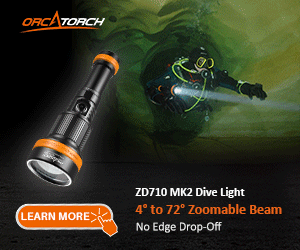I have a warning on the Heinrichs converter. The one I bought, direct from Germany, is aluminum, and looks different from the one pictured on the reef photo advert.Ryan:From my answer to your other thread:
This piece turns the Olympus housing's proprietary bulkhead into 2 nikonos connections, and contains TTL conversion circuitry. I like the redundancy it adds over a Heinrichs connector-

Any strobe that can be connected elecrically, and is compatible with the Olympus TTL Conversion Circuitry, can be used. With the hotshe cable this part is $479.
Lastly, we can replace the existing proptrietary bulkhead with a nikonos style bulkhead & TTL conversion circuitry-
http://www.reefphoto.com/index.php?main_page=product_info&cPath=95_74&products_id=902
Either of those two options, combined with an Ikelite 4104.6 sync cord, would yield TTL. An ikelite housing w/ the OLY-TTL conversion circuitry is competively priced when this conversion is considered, and much more robust.
Mine leaked externally where the Ikelite Nikonos-style cable connector attaches to the aluminum bulkhead. The cable connector has two spaced o-rings. The bulkhead only engages one of these two cables.
It was OK at 10' in a swimming pool. In the ocean, it flooded at 35'. I have sent the bulkhead back to Germany asking for a redesign or a refund.
contact me for more details.
Rick Colman
rcolman@cox.net



